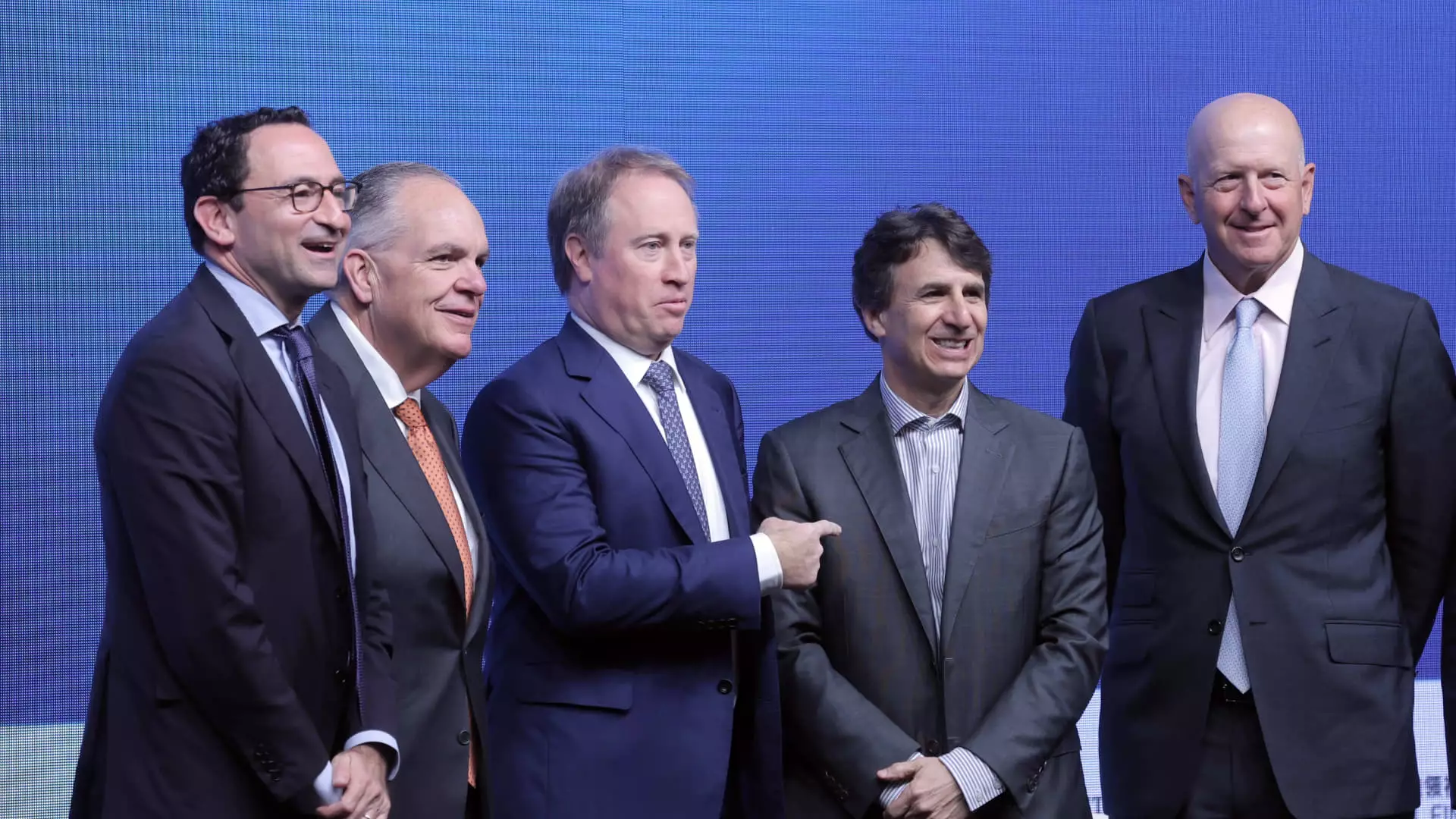In recent months, the United States has experienced a notable resurgence in capital demand, driven by various economic factors and government initiatives. This industrial renaissance, as described by industry leaders like Marc Rowan, CEO of Apollo Global Management, highlights the unprecedented appetite for investment in sectors such as infrastructure and technology. Speaking at the Global Financial Leaders’ Investment Summit in Hong Kong, Rowan underscored the extraordinary nature of this demand, fueled largely by significant government expenditures post-pandemic.
The current environment suggests that the capital-raising business is on the brink of flourishing. With the U.S. government operating under substantial budget deficits, the juxtaposition of this financial strain against the growing need for capital invites scrutiny and speculation about the future dynamics within various sectors. Investment in infrastructure, particularly in semiconductor production and energy efficiency projects spurred by initiatives such as the Inflation Reduction Act, represents a critical area of focus. This investment not only showcases the government’s commitment to revitalizing critical sectors of the economy but also reflects an overarching trend towards sustainable development and technological advancement.
Diving deeper, policies like the CHIPS and Science Act are indicative of a broader strategy to invest in domestic industries crucial for economic resilience. These initiatives warrant billions in allocation, signaling to investors that substantial growth opportunities are available. The claim that the U.S. has been the largest recipient of foreign direct investment for three consecutive years showcases the global confidence in American industry, suggesting that this trend is likely to persist.
Furthermore, the panel discussions at the summit underscored the significance of digital infrastructure as a pivotal driver of future growth. According to Blackstone’s President and COO, Jonathan Gray, data centers have emerged as a preeminent area for investment, reflecting an increasing recognition of their importance in the digital age. Companies are leveraging both equity and financing to build digital infrastructures, promising a robust strategy for future expansions.
The discussions also touched on the recovery of capital-raising activities following a period of muted engagement due to geopolitical tensions and economic volatility triggered by the COVID-19 pandemic. As David Solomon of Goldman Sachs articulated, the market had seen a peak in capital raising efforts during 2020 and 2021, bolstered by extensive stimulus measures. However, the market faced substantial headwinds as the war in Ukraine and inflationary pressures created obstacles.
Recent data suggest a normalization phase in capital-raising activities, with expectations for a friendlier regulatory environment under a potential future administration. These positive signs indicate that the market may be on the verge of renewed vigor, as corporate and consumer sectors appear resilient amidst the ongoing economic fluctuations.
Ted Pick, CEO of Morgan Stanley, conveyed optimism about the corporate landscape, noting that both consumer and corporate sectors are, generally speaking, in “good shape.” Such a sentiment is vital as it establishes a foundation for capital allocation and investment strategies. The willingness of corporations to engage in capital-raising endeavors is often indicative of a healthy economic climate where businesses are prepared to invest in growth opportunities.
In this light, Solomon’s prediction of increased mergers and acquisitions (M&A) activity in 2025 aligns with the broader trends observed in the current financial landscape. Enhanced economic conditions coupled with an abundance of capital could pave the way for more robust M&A engagements, shaping the directions of industries and fueling competitive dynamics across market sectors.
The current era can be characterized as a period where investment in critical sectors is not only necessary but is also creating pathways for substantial economic recovery and growth. The intersection of government policy, private investment, and favorable market conditions positions the U.S. for a promising industrial renaissance. As we look to the future, the collaboration of various stakeholders will play a crucial role in navigating the complexities of an evolving economic landscape—one where capital demand will likely continue to shape America’s industrial narrative.

